The Nonlinear Vibration Response of Umbrella-Shaped Membrane Structure Under Heavy Rainfall Loads
Abstract
1. Introduction
2. Solution of Forced Vibration Theory
2.1. Theoretical Model
2.2. Basic Governing Equations
2.3. Solution of Each Segment of Membrane
The First Segment
3. Membrane Segmentation and Case Analysis
3.1. Membrane Segmentation
3.2. Case Analysis
3.2.1. Displacement Calculation
3.2.2. Frequency Calculation
3.2.3. Acceleration Calculation
4. Conclusions
- (1)
- Based on the conclusions in Section 3.2, which are consistent with theoretical research and basic mechanical knowledge, we believe that the research method in this paper is feasible to solve the vibration response of the umbrella membrane with complex curvature under the action of heavy rainfall.
- (2)
- With an increase in the number of segments, the influence of the number of segments on the results of membrane displacement, frequency, and acceleration decreases, and the solution tends to be more accurate.
- (3)
- The simplification of the displacement function is helpful to reduce the difficulty of calculation, and it can be further studied. For the geometrically nonlinear and orthotropic characteristics of the membrane materials, as well as the effects of different types of loads, further research is needed.
5. Discussions
- (1)
- Enhancing the theoretical framework by incorporating commonly used anisotropic materials, actual dimensions, and other typical loading conditions to refine and expand the theoretical system.
- (2)
- Validating theoretical results through experiments and finite element analysis, comparing the data with current theoretical findings to verify their accuracy.
- (3)
- Providing practical engineering support by conducting a series of studies on umbrella-shaped membrane structures to better understand their structural behavior and assist in real-world construction and maintenance.
Author Contributions
Funding
Data Availability Statement
Conflicts of Interest
References
- Hincz, K.; Gamboa-Marrufo, M. Deformed Shape Wind Analysis of Tensile Membrane Structures. J. Struct. Eng. 2016, 142, 1–5. [Google Scholar] [CrossRef]
- Dutta, S.; Ghosh, S.; Inamdar, M.M. Optimisation of tensile membrane structures under uncertain wind loads using PCE and kriging based metamodels. Struct. Multidiscip. Optim. 2018, 57, 1149–1161. [Google Scholar] [CrossRef]
- Beatini, V.; Carfagni, G.R. Large transformations with moderate strains of tensile membrane structures. Math. Mech. Solids 2017, 22, 1117–1137. [Google Scholar] [CrossRef]
- Stranghöner, N. Tensile membrane structures. Steel Constr. 2015, 8, 221. [Google Scholar] [CrossRef]
- Li, D.; Zheng, Z.L.; He, C.; Liu, C.Y. Dynamic response of pre-stressed orthotropic circular membrane under impact load. J. Vib. Control. 2018, 24, 4010–4022. [Google Scholar] [CrossRef]
- Zheng, Z.L.; Liu, C.Y.; Li, D.; Zhang, T. Dynamic Response of Orthotropic Membrane Structure under Impact Load based on Multiple Scale Perturbation Method. Lat. Am. J. Solids Struct. 2017, 14, 1490–1505. [Google Scholar] [CrossRef]
- Nagaya, K. Transient response of a circular membrane to an eccentric annular impact load. J. Sound Vib. 1977, 55, 215–223. [Google Scholar] [CrossRef]
- Li, D.; Zheng, Z.L.; Liu, C.-Y.; Zhang, G.-X.; Lian, Y.-S.; Tian, Y.; Xiao, Y.; Xie, X.-M. Dynamic response of rectangular prestressed membrane subjected to uniform impact load. Arch. Civ. Mech. Eng. 2017, 17, 586–598. [Google Scholar] [CrossRef]
- Liu, C.J.; Deng, X.W.; Liu, J.; Zheng, Z.L. Impact-induced nonlinear damped vibration of fabric membrane structure: Theory, analysis, experiment and parametric study. Compos. Part Eng. 2019, 159, 389–404. [Google Scholar] [CrossRef]
- Kumazawa, H.; Susuki, I.; Hasegawa, O.; Kasano, H. Influence of Biaxial Loads on Impact Fracture of High-Strength Membrane Materials. Adv. Compos. Mater. 2009, 18, 395–413. [Google Scholar] [CrossRef]
- Rank, E.; Halfmann, A. Wind loads on lightweight structures: Numerical simulation and wind tunnel tests. GAMM-Mitteilungen 2005, 28, 73–89. [Google Scholar] [CrossRef]
- Sun, X.Y.; He, R. Numerical simulation of snowdrift on a membrane roof and the mechanical performance under snow loads. Cold Reg. Sci. Technol. 2018, 150, 15–24. [Google Scholar] [CrossRef]
- Michalski, A.; Gawenat, B.; Gelenne, P.; Haug, E. Computational wind engineering of large umbrella structures. J. Wind. Eng. Ind. Aerodyn. 2015, 144, 96–107. [Google Scholar] [CrossRef]
- Michalski, A.; Haug, E.; Bradatsch, J.; Bletzinger, K.U. Virtual Design Methodology for Lightweight Structures—Aerodynamic Response of Membrane Structures. Int. J. Space Struct. 2019, 24, 211–221. [Google Scholar] [CrossRef]
- Gründig, L. Minimal surfaces for finding forms of structural membranes. Comput. Struct. 1988, 30, 679–683. [Google Scholar] [CrossRef]
- Nayfeh, A. Perturbation Methods; Wiley Interscience: Hoboken, NJ, USA, 1973. [Google Scholar]
- Zheng, Z.L.; Zhang, G.X.; Li, D.; Liu, C.J. Dynamic response of rectangular membrane excited by heavy rainfall. J. Vib. Control 2019, 25, 777–792. [Google Scholar] [CrossRef]
- Galliot, C.; Luchsinger, R.H. Uniaxial and biaxial mechanical properties of ETFE foils. Polym. Test. 2011, 30, 356–365. [Google Scholar] [CrossRef]


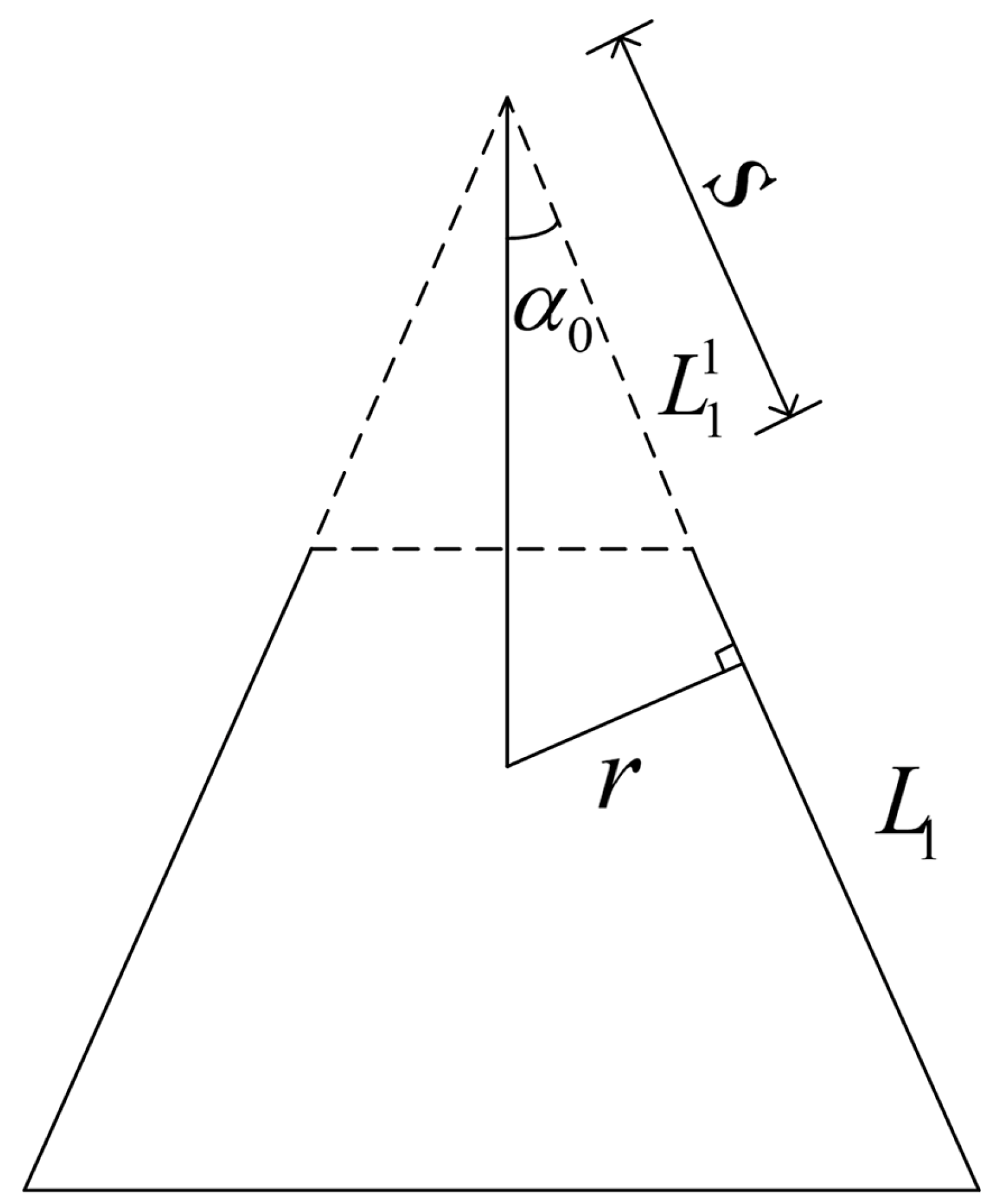
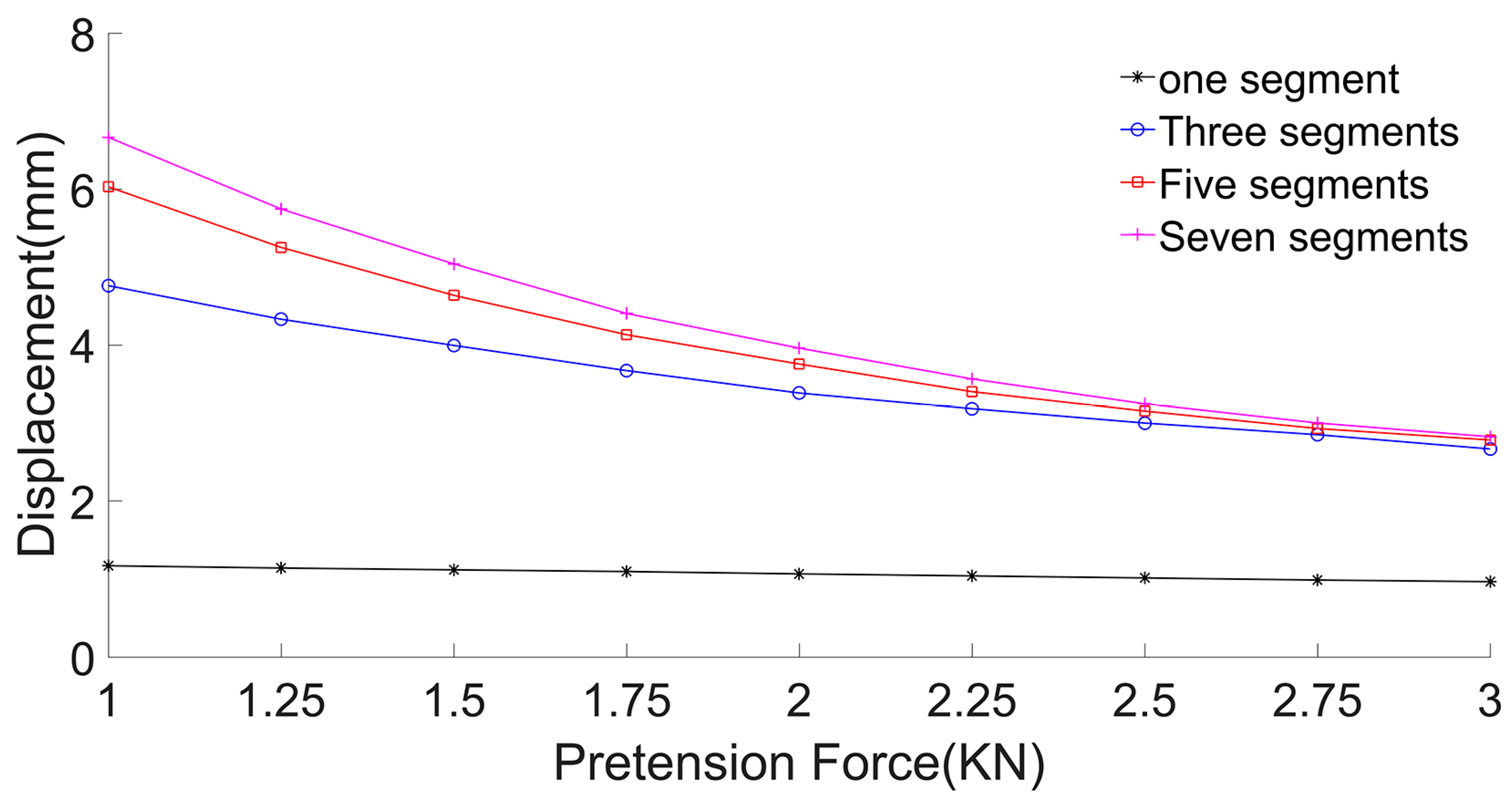
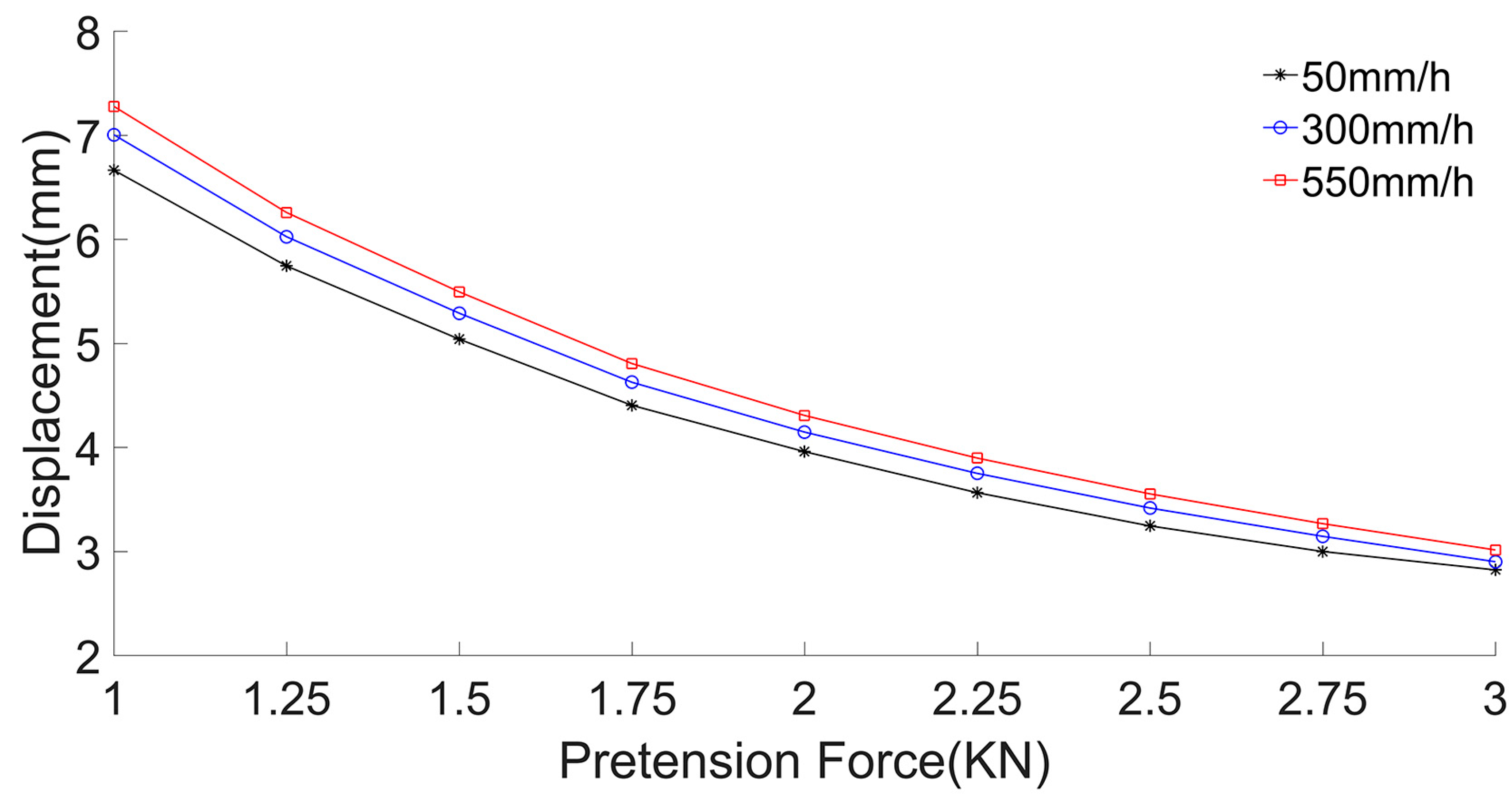

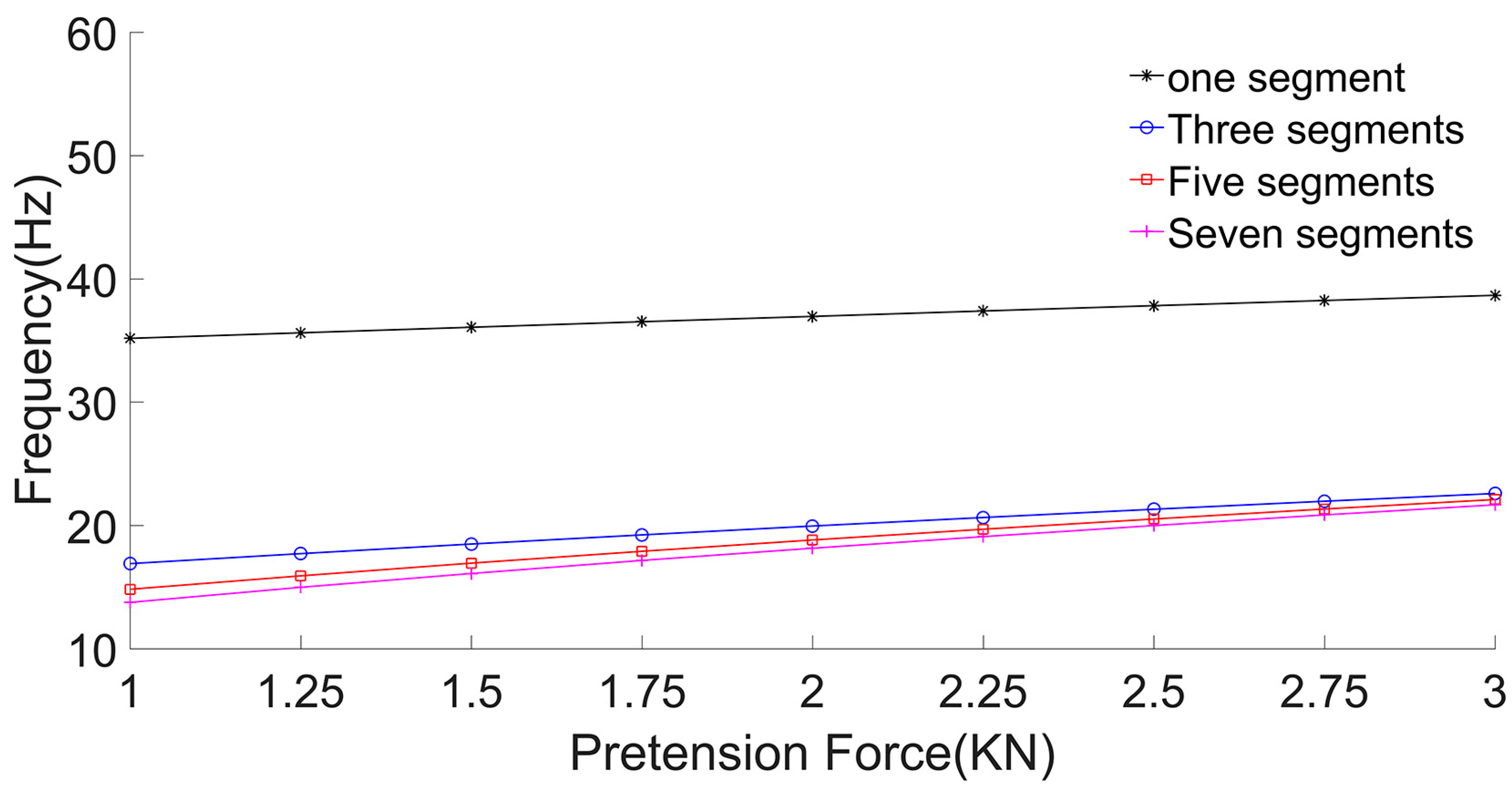
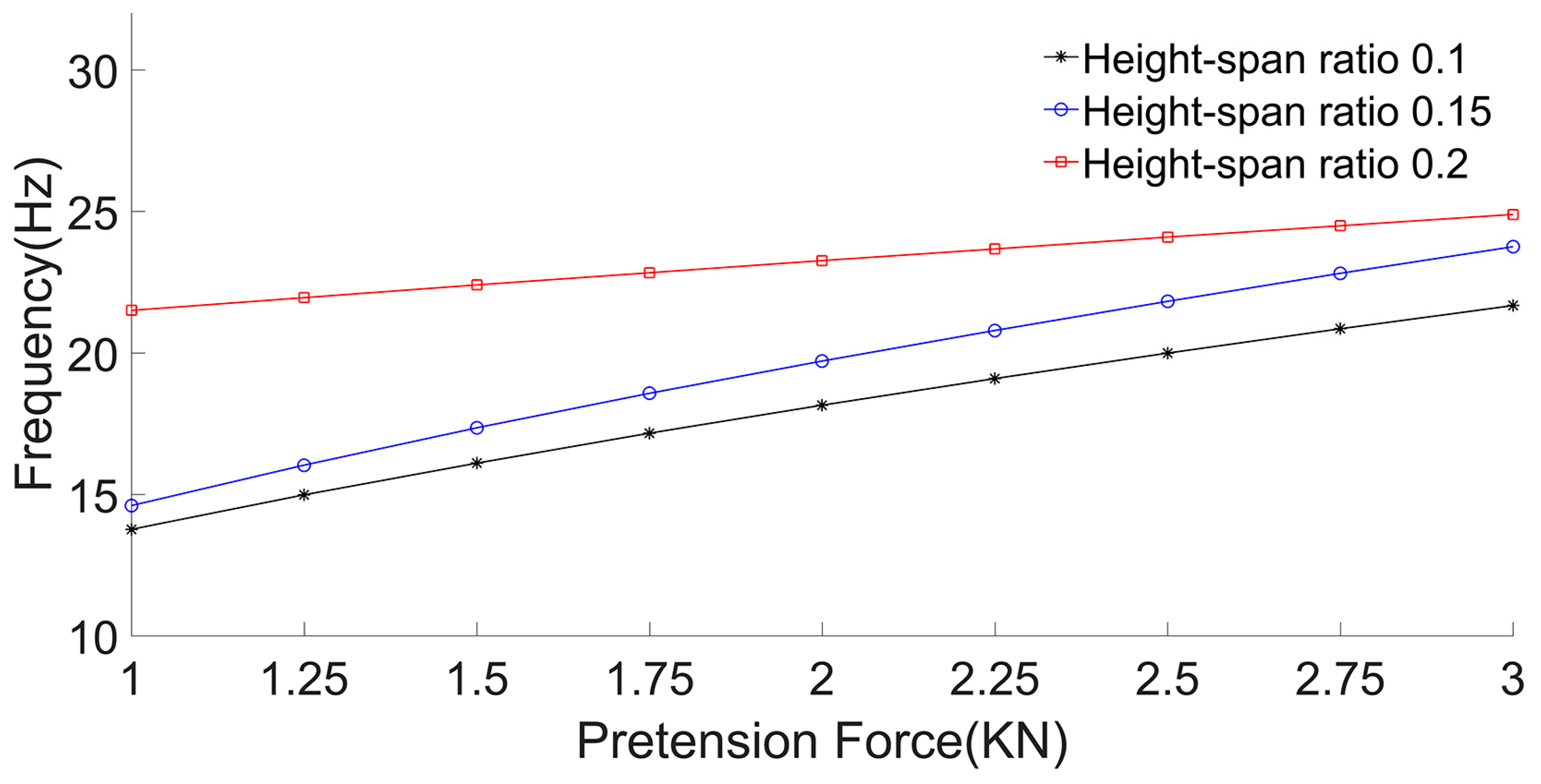
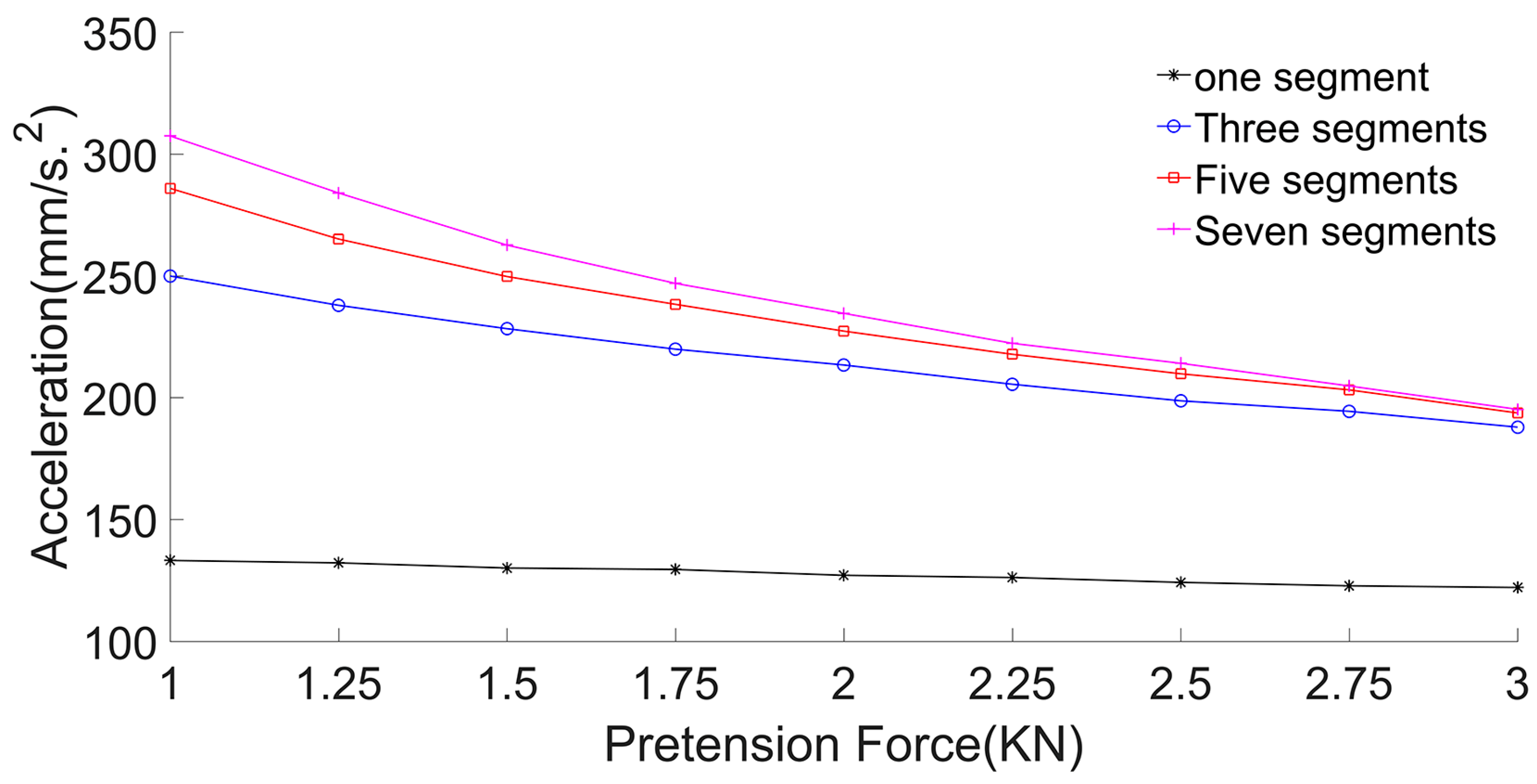
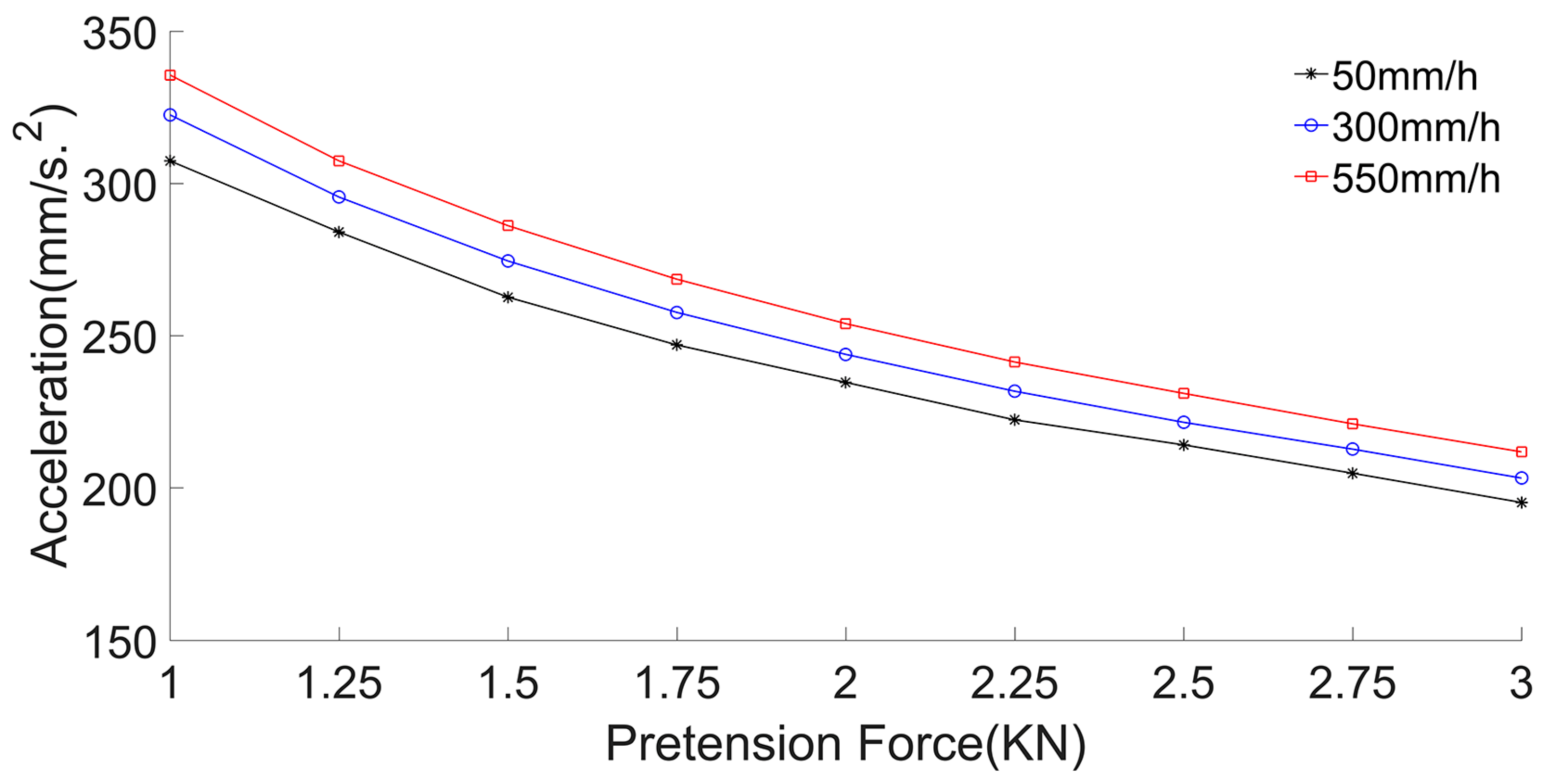
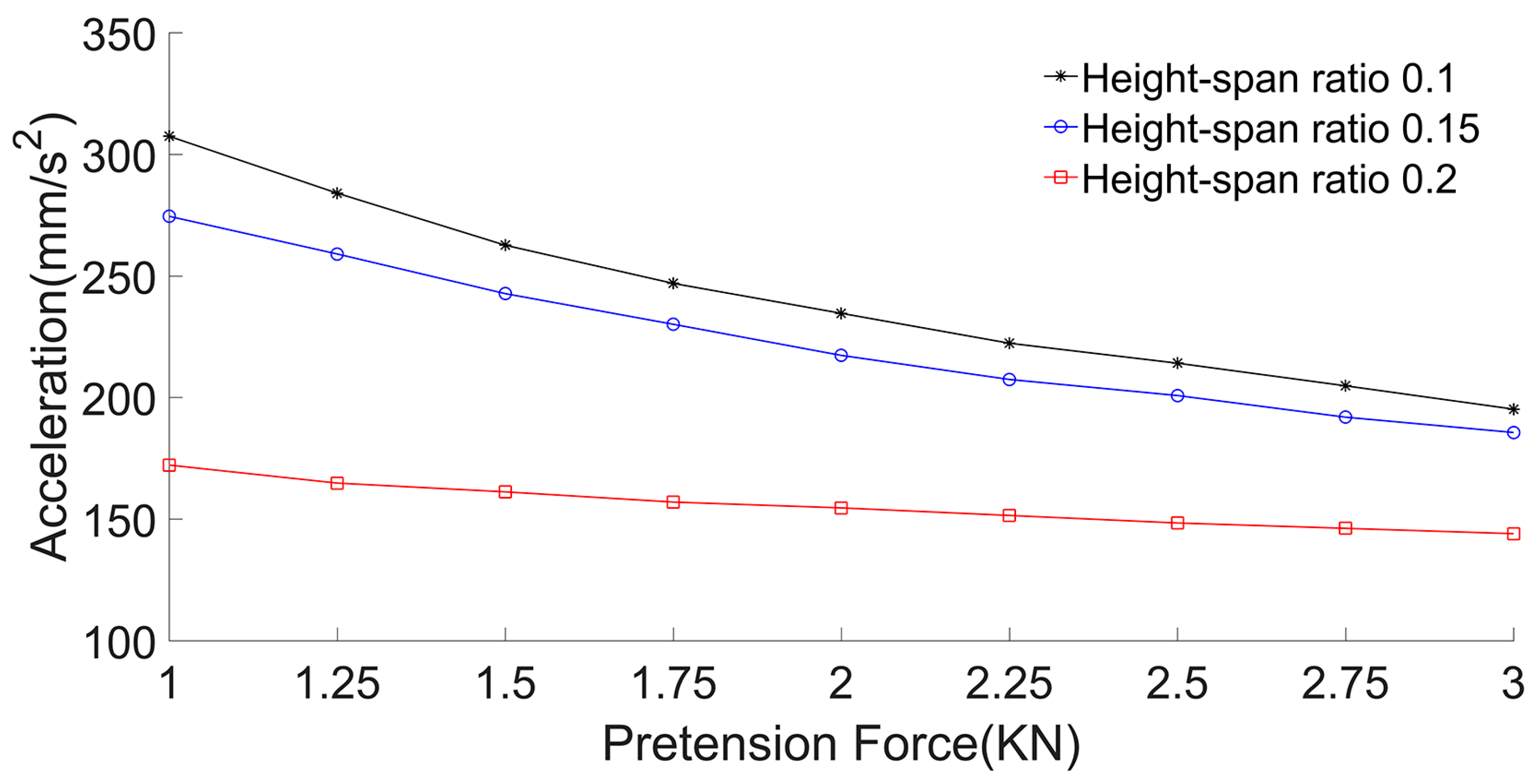
| Type | h (mm) | Poisson Ratio | E (MPa) | ρ (kg/m2) |
|---|---|---|---|---|
| ETFE | 0.25 | 0.38 | 1000 | 0.4375 |
| Segments | Pretension (kN) | ||||||||
|---|---|---|---|---|---|---|---|---|---|
| 1 | 1.25 | 1.5 | 1.75 | 2 | 2.25 | 2.5 | 2.75 | 3 | |
| 3 | 307% | 280% | 257% | 235% | 220% | 206% | 196% | 189% | 176% |
| 5 | 26.6% | 21.3% | 16.1% | 12.5% | 10% | 7.83% | 5.11% | 3.48% | 2.81% |
| 7 | 10.6% | 9.37% | 8.26% | 6.61% | 5.43% | 3.88% | 2.98% | 2.07% | 1.86% |
| Segments | Pretension (kN) | ||||||||
|---|---|---|---|---|---|---|---|---|---|
| 1 | 1.25 | 1.5 | 1.75 | 2 | 2.25 | 2.5 | 2.75 | 3 | |
| 3 | 52% | 50.3% | 48.7% | 47.3% | 46% | 44.8% | 43.7% | 42.6% | 41.6% |
| 5 | 12.3% | 10.2% | 8.38% | 6.92% | 5.66% | 4.60% | 3.71% | 2.87% | 2.17% |
| 7 | 7.15% | 5.85% | 4.96% | 4.13% | 3.56% | 3.05% | 2.58% | 2.25% | 1.95% |
| Segments | Pretension (kN) | ||||||||
|---|---|---|---|---|---|---|---|---|---|
| 1 | 1.25 | 1.5 | 1.75 | 2 | 2.25 | 2.5 | 2.75 | 3 | |
| 3 | 87.6% | 80% | 75.3% | 69.8% | 66.8% | 62.8% | 60% | 57.3% | 53.9% |
| 5 | 14.4% | 11.4% | 9.52% | 8.05% | 7.08% | 5.99% | 5.08% | 4.19% | 3.09% |
| 7 | 7.52% | 6.37% | 5.17% | 3.91% | 3.08% | 2.48% | 2.06% | 1.59% | 0.77% |
Disclaimer/Publisher’s Note: The statements, opinions and data contained in all publications are solely those of the individual author(s) and contributor(s) and not of MDPI and/or the editor(s). MDPI and/or the editor(s) disclaim responsibility for any injury to people or property resulting from any ideas, methods, instructions or products referred to in the content. |
© 2025 by the authors. Licensee MDPI, Basel, Switzerland. This article is an open access article distributed under the terms and conditions of the Creative Commons Attribution (CC BY) license (https://creativecommons.org/licenses/by/4.0/).
Share and Cite
Luo, Z.; Zheng, Z.; Yang, R.; Zhang, P. The Nonlinear Vibration Response of Umbrella-Shaped Membrane Structure Under Heavy Rainfall Loads. Buildings 2025, 15, 2529. https://doi.org/10.3390/buildings15142529
Luo Z, Zheng Z, Yang R, Zhang P. The Nonlinear Vibration Response of Umbrella-Shaped Membrane Structure Under Heavy Rainfall Loads. Buildings. 2025; 15(14):2529. https://doi.org/10.3390/buildings15142529
Chicago/Turabian StyleLuo, Zhongwei, Zhoulian Zheng, Rui Yang, and Peng Zhang. 2025. "The Nonlinear Vibration Response of Umbrella-Shaped Membrane Structure Under Heavy Rainfall Loads" Buildings 15, no. 14: 2529. https://doi.org/10.3390/buildings15142529
APA StyleLuo, Z., Zheng, Z., Yang, R., & Zhang, P. (2025). The Nonlinear Vibration Response of Umbrella-Shaped Membrane Structure Under Heavy Rainfall Loads. Buildings, 15(14), 2529. https://doi.org/10.3390/buildings15142529






